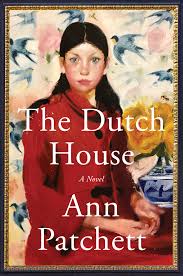Chapter 4
byChapter 4 marks a pivotal moment in the transformation of the Dutch House, illustrating how a single event—the wedding of Andrea and their father—signals the erosion of the family’s once-stable foundation. Six weeks after Maeve began her studies at Barnard, she returned home to witness the ceremony, which took place under the watchful eyes of the VanHoebeeks’ portraits, a silent reminder of the house’s long history. The grandeur of the occasion, accentuated by Andrea’s friends and family admiring the estate, contrasted starkly with the siblings’ growing awareness that they were becoming outsiders in their own home. The setting, meticulously arranged with bright autumnal light, fresh floral arrangements, and the reflective shimmer of water lilies in the pool, felt more like a display of wealth than a celebration of love. Though the couple married in a civil ceremony at home—lacking the religious sanctity of a church wedding—Maeve and the narrator could not shake their skepticism about its legitimacy, both in law and in spirit.
The subtle yet undeniable shift in power within the household became apparent, particularly in the way Andrea asserted her dominance over their living space. The transition of authority was most clearly felt by the longtime staff, Sandy and Jocelyn, who found themselves sidelined by Andrea’s increasing control over the home’s management. Andrea’s reshaping of the Dutch House was not limited to furnishings and decor; it extended into relationships and personal boundaries, exemplified by her decision to move her daughter, Norma, into Maeve’s room. This blatant act of displacement, carried out without consideration for Maeve’s connection to the space, signified a deep and deliberate attempt to erase the past and establish her own legacy within the house. Maeve’s return for Thanksgiving only reinforced her realization that she no longer had a place in her childhood home, her once-familiar surroundings altered beyond recognition.
Faced with no other option, Maeve was relegated to the attic, a stark contrast to the room she had once called her own. Ever sharp-witted, she compared her situation to A Little Princess, likening herself to the story’s heroine, who found herself stripped of privilege and confined to a less desirable existence. Though her words carried humor, they also masked the deeper pain of watching Andrea dismantle what was left of their family’s history in the Dutch House. This shift in dynamics was not merely about space but about erasing the warmth, familiarity, and stability the home once provided. The house, which had long served as a symbol of security and tradition, now became an arena of quiet battles, where Maeve and her brother silently resisted Andrea’s growing influence.
Amidst this upheaval, Maeve’s academic potential remained untapped, her talent as a bookkeeper becoming a stark contrast to the ambitious future she had once envisioned. Despite her intelligence, she hesitated to pursue further education, dismissing her brother’s encouragement to do so. Instead, she remained deeply tethered to the past, unable to move beyond the injustices they had endured since their father’s passing. The narrator, though equally impacted, had begun to consider what lay ahead, while Maeve’s focus remained fixed on what had been lost. Her reluctance to let go was understandable; after all, the Dutch House was more than a place—it was a tangible reminder of a childhood and family that had been abruptly stolen from them.
The tension between past and present, loss and resilience, forms the heart of this chapter, painting a vivid picture of how power dynamics shift within families after loss. Maeve and her brother, though still connected by their shared experiences, begin to take different approaches to their reality—one clinging to memory, the other searching for a way forward. The Dutch House, once a place of comfort, transforms into a battleground where Andrea’s dominance is felt in every decision, from room assignments to the treatment of long-serving staff. The siblings’ struggle is no longer just about physical displacement but about preserving a sense of identity and belonging in a home that no longer welcomes them.
Through this chapter, the narrative powerfully conveys the emotional weight of change, the fragility of familial ties, and the quiet but profound ways people cope with loss. Maeve’s humorous deflections, the narrator’s attempts to encourage her, and the silent tension within the household all contribute to the underlying theme of resilience amidst adversity. Though Andrea has succeeded in altering the physical space of the Dutch House, the siblings’ memories of it remain intact, a reminder that while they may have lost their home, they still carry its essence within them.


